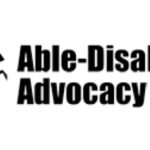It’s tax season, and you’re likely anticipating your state tax refund. However, sometimes the refund you receive isn’t quite what you expected, or it might arrive as a check when you opted for direct deposit. Understanding the common reasons for these discrepancies can ease your concerns and guide you on what steps to take. Let’s explore why your state refund might differ from your initial calculation or why you might receive a check in the mail.
Why Your State Refund Amount Might Be Different Than Expected
There are primarily two main reasons why the state tax refund you receive could be different from the amount you anticipated when filing your return.
Errors or Missing Information on Your Tax Return
One of the most common reasons for a change in your refund amount is errors or omissions on your submitted tax return. Tax agencies meticulously review returns, and if discrepancies or missing information are found, they will adjust your return accordingly. This adjustment can lead to either a decrease or an increase in your refund. If your return is adjusted, the tax authority will send you a notification explaining the changes made and how they impacted your refund amount. It’s important to carefully review this notice to understand the specific adjustments. For clarification or if you believe an error has occurred, contacting the customer service department of your state’s tax agency is advisable.
Tax Refund Offsets: Applying Your Refund to Outstanding Debts
Another significant reason for a reduced state tax refund is due to offsets. Tax refund offsets occur when your refund is used to pay off certain outstanding debts. These debts can be categorized into state and federal obligations.
State Tax Debts: If you have unpaid state taxes from previous years within the same state, the tax agency is authorized to withhold part or all of your current refund to cover these prior tax liabilities. You will receive a notification detailing the tax years for which you had outstanding balances and the portion of your refund that was applied to these debts.
Other Government Debts: State tax refunds can also be offset to pay debts owed to various government entities. This can include debts to local governments, state agencies, courts, the Internal Revenue Service (IRS), or other federal government agencies. If your refund is offset for these reasons, you will receive a letter indicating the agency that made the claim and their contact information, along with the amount of your refund that was used to settle the debt. It’s crucial to understand that the state tax agency initiating the refund process often does not have detailed information about these external debts. Therefore, if you have questions or believe a claim was made in error, you must directly contact the agency listed in the notification letter.
Should there be any remaining balance on your refund after these debt offsets, the state will issue a check for the remaining amount, sent to the address on your most recently filed tax return. It’s important to note that in cases of refund reduction due to offsets, the remaining refund balance cannot be issued via direct deposit.
For a more comprehensive understanding of state and federal offset programs and their implications on your refund, you can consult resources specifically detailing why your refund might have been reduced or withheld.
Why Did You Receive a Check Instead of Direct Deposit?
Even if you requested direct deposit when filing your state tax return, there are circumstances where you might receive a physical check instead.
Refund Reduction Due to Debt Offsets or Adjustments
As previously mentioned, if your refund is reduced, either due to offsets for debts or adjustments made by the tax agency after reviewing your return, the remaining balance will be issued as a check. Direct deposit is typically not an option for reduced refund amounts. You will receive a letter explaining the reason for the adjustment or offset, and the check will be mailed to your address on record.
Incorrect or Closed Bank Account Information
If the bank account information you provided on your tax return was inaccurate, or if the account has been closed, the direct deposit will fail. In such cases, the state tax agency will default to issuing a paper check, which will be mailed to the address provided on your tax return. It’s crucial to double-check your bank routing number and account number when filing your taxes to avoid this issue.
Routing Number for International Banks
Another less common reason for receiving a check is providing a routing number associated with a bank located outside of the territorial jurisdiction of the United States. Due to electronic banking regulations, state tax agencies are unable to process direct deposits to or through international financial institutions. In these situations, a check will be issued and mailed to you.
In conclusion, while anticipating your state tax refund can be exciting, understanding the potential reasons for discrepancies or changes in payment method can help manage expectations. Always review any notices from your state tax agency carefully and take appropriate action, such as contacting the relevant agencies for clarification on debt offsets, to resolve any issues related to your state tax refund.

